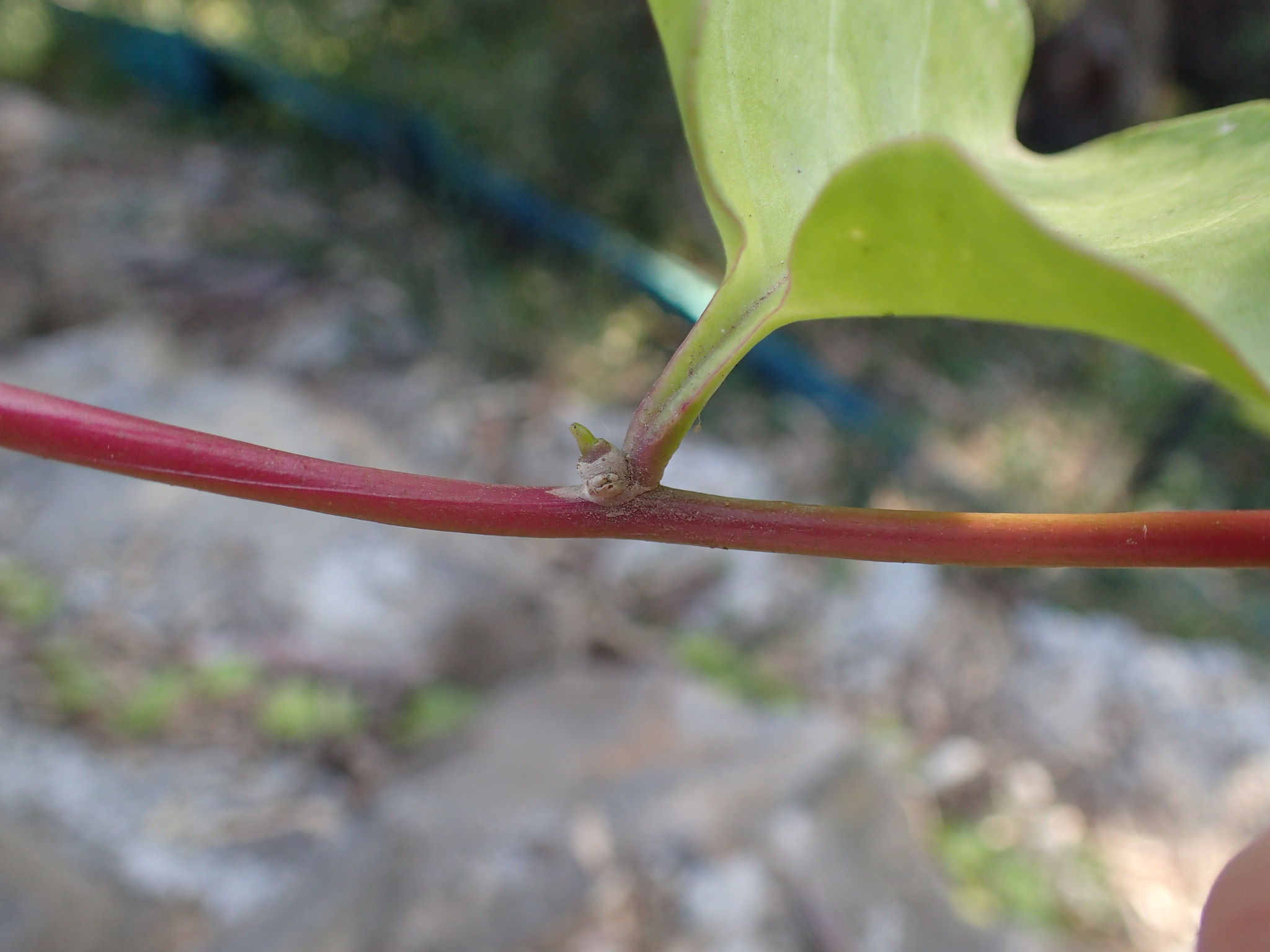
Fleshy, mucilaginous perennials or occasionally herbs with long, thin, twining stems and fleshy roots. Leaves alternate, broadly ovate, fleshy, without stipules. Flowers bisexual or unisexual, in spike-like clusters, small, regular, with 2 petal-like bracts. Perianth segments 5, free or joined at the base. Stamens 5. Carpels 3, united. Ovary superior having a single chamber with one basal ovule. Fruit a thin walled nutlet usually enclosed by the persistent fleshy perianth.
A family most closely related to the Portulacaceae.
A few species are grown as ornamentals or vegetables; the tubers of the genus Ullucus tuberosa are an important food crop in the Andes. Pigments of Basella fruit are used for food colouring in Asia.
Cultivated plant a rampant scrambling fleshy-leaved vine that has become quite widely naturalised.
4 genera and approximately 19 species, mostly from tropical America (1 species naturalised in Australia).
Source: (1997). Basellaceae. In: . Horticultural Flora of South-eastern Australia. Volume 2. Flowering plants. Dicotyledons. Part 1. The identification of garden and cultivated plants. University of New South Wales Press.
